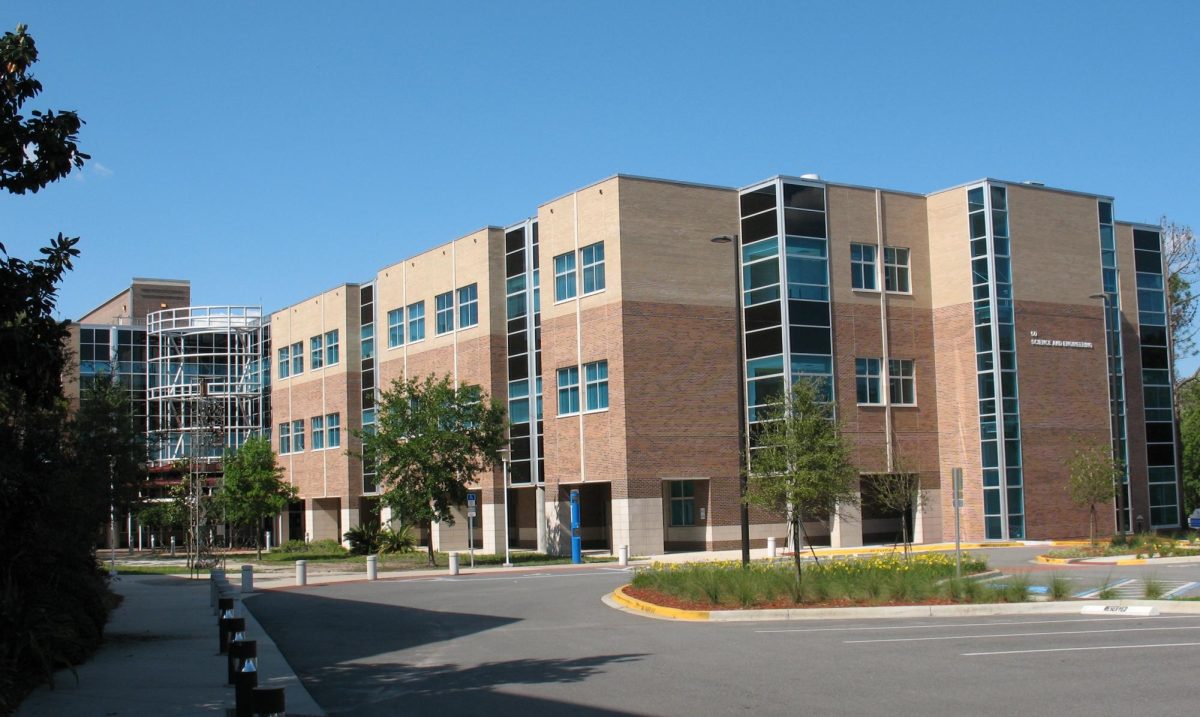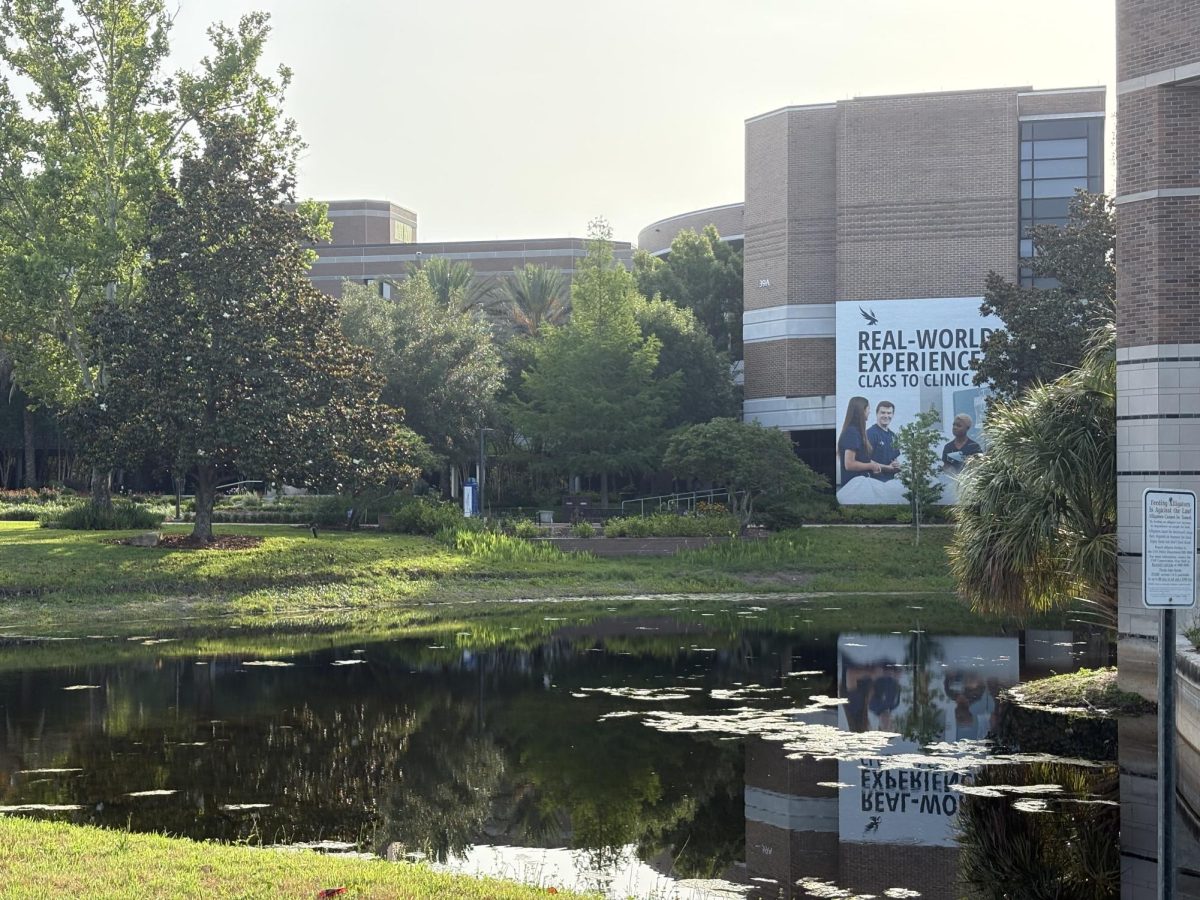Many students, employers and college administrators are beginning to realize serious cracks in the American university system: rising tuition costs, increasing student debt obligations and a devaluation of degrees.
Nationwide, average debt for graduating seniors with loans from a four-year public university rose from $16,850 in 2004 to $20,200 in 2008, a 20 percent increase, according to the Project on Student Debt, a nonprofit independent research policy organization.
And it’s expected to continue to increase over the next decade if universities, states and the federal government don’t take drastic measures, said Edie Irons, communications director for the institute that issued the report.
“Based on the past 10 to 20 years, the trend is upward,” Irons said. “And with the current economic strain on state budgets, it’s forcing them to cut back on financing institutions and scholarships.”
Florida Gov. Charlie Crist convened an emergency special session Jan. 14, 2009 to deal with the almost 25 percent budget shortfall the state expected during the initial onset of the recession.
The lawmakers approved a $2.8 billion package of budget cuts, reserve runs and fee increases. Educational spending felt the brunt of the measure, suffering a $466 million cut and a 4 percent decrease to the state university system – reducing spending by $140 per student.
Although UNF graduates have about $5,500 less debt than the national average, student debt too is trending upward.
There is a correlation between rising tuition costs and debt levels; and also between a decrease in state funded tuition assistance programs – like Bright Futures – and a larger student debt load, Irons said.
In Florida, the tuition is poised to increase about 15 percent annually for the next 10 years because of the plan Crist and the Higher Education Committee of the Florida Senate enacted Feb. 18, 2009.
The plan allows the Board of Governors to raise tuition 8 percent per year and gives each university’s Board of Trustees the option to raise it an additional 7 percent.
UNF opted for the whole 15 percent increase during the 2009-2010 budget year.
“Tuition in Florida is lowest in the country,” UNF President John Delaney said in a previous interview with the Spinnaker. “If we raise tuition 15 percent per year, it would take seven to nine years to even get to the national average.”
Comparing state university’s graduating class debt
UNF’s average debt load for the 2008 graduating class was $14,964, which is lower than Florida State University, University of Florida and University of South Florida. However, UNF was drastically higher than Florida International University’s average student debt of slightly more than $10,000 and nominally higher than University of Central Florida’s graduating class.
“We do a good job of helping the students and informing them ahead of time of debt management and responsible borrowing,” said UNF One Stop Director Jim Owen.
One of the things the university focused on when forming One Stop was being able to lay out all of the pertinent information to students – tuition costs, A&S fees, degree obligations, etc. – at the same time, so they can make the most educated decision, he said.
“Part of the residual effect of that is that the students are taking heed of our advice,” Owen said. “Families are also being more diligent in monitoring their students money and advising them of the right course of action.”
About 48 percent of Florida’s 2008 graduation class left with student loans, which is drastically lower than the national average of 67 percent. Nationally, about 1.4 million students had loans to repay in 2008, as opposed to the 1.1 million in 2004, a 27 percent increase in four years.
UNF beat both the state and national statistics concerning the proportion of students graduating with loans, about 41 percent of students graduated with loan obligations.
FIU and Florida Gulf Coast University were the only two four-year public universities to have a lower rate, 29 percent and 13 percent respectfully. UF tied UNF at 41 percent while USF, FSU and UCF ranged between 44 percent to 50 percent of their 2008 graduating class that acquired debt associated with the costs of school.
A possible explanation for the low debt levels could be attributed to the amount of university aid to students, Owen said.
Another possible reason is that on average, UNF has an older undergraduate class.
“We are getting younger, the average student was in the in their late 20s several years ago,” Owen said. “Typically, the older you are, the wiser you are with money, which could also account for UNF’s lower debt levels.”
Government assistance
But with state tuition levels set to rise exponentially over the next few years, student-incurred debt will inevitably rise unless federal and state subsidies rise with the costs.
“We will probably see an increase in student debt over the next five to 10 years because going to school will be more expensive,” Owen said.
As it stands now, Florida’s largest student subsidy, Bright Futures, will no longer rise in-tandem with the increase in tuition due to dwindling Florida Lottery funds.
As of fall 2009, all Florida Academic and Florida Medallion scholars will now receive a flat rate that will not cover the differential the tuition increases cause. This could mean more than $400, give or take, in extra annual expenses, meaning each semester could cost more than $1,300.
“The increases in tuition will increase debt levels,” Irons said. “Thousands of students rely on Bright Futures, and if they decide to further reduce the amount of assistance, it will only raise students’ need to borrow.”
Why does going to school cost so much?
Colleges cost so much because they can get away with increasing their fees, said Richard Vedder, Ohio University economics professor and the director of the Center of College Affordability and Productivity.
One of the biggest reasons, he said, was that third parties, namely the federal government, contribute a large portion of tuition.
“When other people pick up the bill, it makes people a lot less sensitive to increases,” he said.
He added that because most four-year colleges are nonprofit, they don’t have to worry too much about the bottom line, unlike private universities and businesses.
“There are no benefits to cut cost, only benefits to expand and add more staff,” Vedder said.
It’s no accident the health care and university sectors have the highest levels of inflation, Vedder said. This is because they receive more subsidies than all other industries, he said.
“They drop money all over the campus, some of it is given for cushy salaries,” he said. “ I should know, I have been ripping off tax payers for 40 years. I used to be a department chairman, and I had incentives to hire more people, while not increasing class loads. So we all got higher salaries and did less.”
He also said schools’ competition to out-do one another leads to higher costs.
Vedder understands the need for schools to compete but to engage in an academic arms race to hire superstar professors or to race to build the best new luxury item was over the top, especially if all of the students are forced to pay for things only a small segment utilize, he said.
“UNF is never going to be the Harvard of the south, nor should it be,” he said. “There is nothing wrong with being a good undergrad school.”
So now you’ve graduated, have a degree and a bunch of debt, what’s next?
Students saddled with an increasing debt load may see a light at the end of the collegiate tunnel but it is it more of a pipe dream than a realistic expectation?
Coupled with the highest levels of unemployment and an over-saturation of newly graduated students in the market, many are now learning their degree doesn’t mean what it did a generation ago.
A bachelor’s degree was more a rarity in in 1973 as just 47 percent of high school graduates went to college. By the end of the fall semester in 2008, the number had risen to almost 70 percent. College has simply become the next ubiquitous step for the American teen.
The influx in degrees and the causative devaluation of degrees is no secret in the world of academia. The annual survey by the Higher Education Research Institute has been asking students for more than four decades what they believe the highest degree they will receive. In 1972, 38 percent said a bachelor’s degree would be their highest degree, which is in stark comparison to the only 22 percent who said it would be their highest degree earned in 2008. Those students planning on obtaining a masters degree also increased 11 percent during the same time span.
More than 70 percent of graduating seniors have made plans to attend post-baccalaureate studies, according to the same report. But more telling of the current job market, more than 45 percent of recently graduated seniors are looking for employment with no luck as of yet, while only 25 percent have reported they had received a job offer.
However, students can depend on Collegegrad.com’s list of Top Intern Employers for possible leads to gaining a job.
Leading the Top Intern Employers pack, the survey projects that Walgreens will be hiring 5,650 interns. With second-ranked Southwestern Publishing projecting 2800 intern positions. General Electric plans to hire 2400 interns, Deloitte & Touche USA LLP will add 2300, and PriceWaterhouseCoopers will put 2279 interns on staff. Other firms adding significant numbers of interns in 2009 are KPMG LLP, Northwestern Mutual Financial Network, Lockheed Martin, Ernst & Young, Enterprise Rent-A-Car, Intel, Target and Microsoft.
“Many students who complete unpaid internships will tell you that the experience was invaluable in terms of the learning and connections acquired, while others who were paid were disappointed with the lack of meaningful work and opportunities provided,” said Susan Simmerman, assistant director for Experiential Education at Arizona State University, in a news release.
Students wishing to land one of these internships must put their best foot forward and stress the qualities employers are seeking: communication skills, both written and oral; good time management; strong work ethic; dependability; initiative; problem-solving skill; and coursework that is relevant to the position applied for. And those traits are just the basics. To truly stand out, an applicant must have a rich extracurricular resume.
“I am sometimes in awe of the amount of extracurricular activities I see on resumes,” said Jill Rushbrook, career counselor at Eastern Connecticut State University. “Many college students are getting first-hand knowledge of what it means to lead others and work with team members whether it is on SGA, with Habitat for Humanity, or Rock the Vote.”











